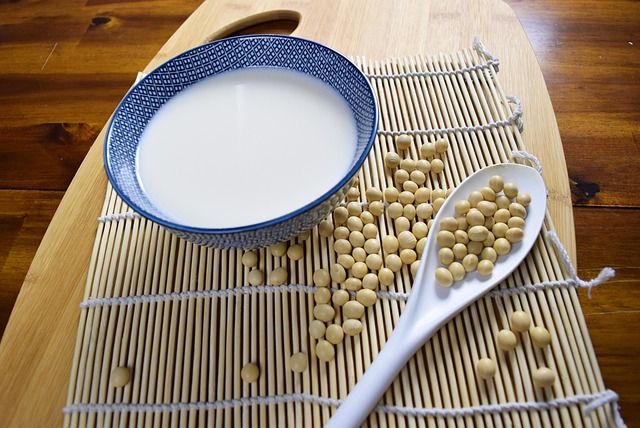In recent years, the conversation around nutrition has shifted from simply what we eat to how it affects our overall well‑being. One of the most transformative topics in this dialogue is the rise of protein alternatives. Whether driven by ethical concerns, environmental awareness, or personal health goals, many people are turning to non‑animal sources of protein to support a balanced diet and a healthier lifestyle. This article explores why protein alternatives matter, the variety available, and practical ways to incorporate them into everyday meals.
The Importance of Protein Alternatives for a Healthy Lifestyle
Protein is a fundamental building block for muscle repair, hormone production, and immune function. Traditional diets often rely on animal proteins such as beef, pork, and poultry. However, emerging evidence suggests that substituting or reducing animal protein with plant‑based or other alternatives can have numerous health benefits.
Studies indicate that diets high in plant proteins are associated with lower risks of heart disease, hypertension, and type 2 diabetes. Additionally, many protein alternatives are naturally low in saturated fat and free from cholesterol, which can help maintain healthy blood lipid levels. By integrating protein alternatives into daily meals, individuals can enjoy a nutrient‑dense diet that supports long‑term wellness.
Exploring the Spectrum of Protein Alternatives
The world of protein alternatives is broader than many realize. Below are key categories, each offering distinct nutritional profiles and culinary possibilities.
- Plant‑Based Proteins – beans, lentils, chickpeas, quinoa, tofu, tempeh, edamame, seitan, and soy products.
- Insect Proteins – crickets, mealworms, and grasshoppers, which are protein‑rich, low in fat, and contain essential micronutrients.
- Cultured or Lab‑Grown Proteins – cells grown in bioreactors to produce meat‑like textures without raising livestock.
- Fermented Protein Sources – fermented soy products like tempeh and miso add probiotics and improve digestibility.
- Algal Proteins – algae such as spirulina and chlorella provide high‑grade protein and a spectrum of vitamins.
Each of these alternatives carries a unique set of vitamins, minerals, and bioactive compounds that contribute to overall health. For example, legumes are high in fiber and iron, while insect proteins are rich in zinc and selenium.
Plant‑Based Proteins: A Daily Companion
Plant proteins are among the most accessible and widely consumed options. Chickpeas, lentils, and black beans can replace meat in soups, stews, and salads, delivering essential amino acids while keeping caloric density in check.
“The Mediterranean diet’s emphasis on legumes illustrates the long‑standing wisdom of plant‑based protein sources,” says nutritionist Dr. Maya Patel.
Beyond legumes, soy products such as tofu and tempeh offer a complete protein profile, containing all nine essential amino acids. When combined with whole grains, the amino acid balance is further enhanced, making these pairings ideal for vegetarians and vegans alike.
Insect Protein: Sustainable and Nutritious
While insects may seem unconventional in many cultures, they represent a highly sustainable protein source. One cup of roasted crickets contains more protein than a comparable portion of beef, yet it requires far less water, land, and feed.
In addition to protein, insect meals are rich in iron, calcium, and omega‑3 fatty acids. Their high chitin content also supports gut health. Though the taste and texture may take some adjustment, incorporating protein alternatives like cricket flour into baked goods or smoothies can be a creative and eco‑friendly option.
Cultured Protein: The Future of Meat
Lab‑grown meats are produced by cultivating animal cells in controlled environments. This method can dramatically reduce the carbon footprint associated with traditional livestock farming. While still emerging in mainstream markets, cultured proteins are poised to become a mainstream protein alternative, offering the familiar taste and texture of meat without the ethical and environmental concerns.
As the technology advances, cultured proteins could provide a consistent supply of high‑quality protein alternatives, especially in regions where animal farming is unsustainable.
Fermented and Algal Proteins: Hidden Gems
Fermented soy products like miso, tempeh, and natto not only deliver protein but also introduce beneficial probiotics that improve digestion. Algae such as spirulina are packed with protein, B vitamins, and antioxidant pigments like phycocyanin.
These foods can be seamlessly incorporated into smoothies, soups, or as seasoning boosts, adding depth of flavor while delivering a nutrient boost.
Balancing Nutrients with Protein Alternatives
While protein alternatives bring many benefits, they also require mindful planning to ensure a balanced intake. Here are key considerations:
- Amino Acid Completeness – Most plant proteins lack one or more essential amino acids. Combining beans with grains (e.g., rice and beans) can create a complete protein profile.
- Iron and Zinc Absorption – Plant proteins contain phytates that can inhibit mineral absorption. Pairing them with vitamin C–rich foods, such as citrus or bell peppers, enhances iron and zinc uptake.
- Omega‑3 Intake – If relying heavily on plant proteins, incorporate sources of alpha‑linolenic acid (ALA) like flaxseed, chia seeds, or walnuts to support heart health.
- Digestive Tolerance – Introducing high‑fiber protein alternatives gradually helps the gut adjust, reducing bloating or gas.
Integrating Protein Alternatives into Daily Meals
Switching to protein alternatives doesn’t require a radical overhaul of your kitchen. Here are practical ways to weave them into familiar dishes:
- Breakfast – Add chickpea flour to pancakes or blend a scoop of pea protein into a smoothie.
- Lunch – Replace a turkey sandwich with a tofu or tempeh wrap, or toss a quinoa salad with roasted vegetables.
- Dinner – Swap a steak for a plant‑based burger patty or serve a lentil-based curry with brown rice.
- Snacks – Snack on roasted edamame, protein‑enhanced trail mix, or hummus with veggie sticks.
Flavor Enhancements for Protein Alternatives
One challenge many people face is the perceived blandness of some plant proteins. To elevate taste and texture, consider the following:
- Marinating – Let tofu or tempeh soak in soy sauce, maple syrup, and garlic before grilling.
- Seasoning Blends – Use spice mixes like curry powder, smoked paprika, or harissa to add depth.
- Textural Contrast – Combine crispy roasted chickpeas with creamy avocado for mouthfeel variety.
- Umami Boost – Finish dishes with nutritional yeast or miso paste for savory richness.
Common Myths About Protein Alternatives
Despite growing popularity, misconceptions persist. Clearing these myths can help consumers make informed choices.
- Myth: Plant proteins are incomplete. Reality: While individual plant proteins may lack one amino acid, combining foods like beans with grains creates a complete protein.
- Myth: Protein alternatives are always low in nutrients. Reality: Many alternatives—soy, lentils, and algae—are rich in micronutrients such as iron, zinc, and vitamin B12.
- Myth: They are only for vegetarians. Reality: Athletes and active individuals often use pea or hemp protein powders to supplement training needs.
- Myth: Insect protein is unsafe. Reality: Insects are edible in many cultures, are regulated by food safety authorities, and can be processed hygienically.
Conclusion: A Holistic Approach to Health Through Protein Alternatives
Embracing protein alternatives offers a multifaceted strategy to improve health, support sustainability, and diversify the palate. By understanding the nutritional nuances and integrating diverse sources into balanced meals, individuals can achieve robust protein intake without relying exclusively on animal products.
Whether you’re motivated by personal wellness, ethical values, or environmental stewardship, protein alternatives present a practical and flavorful path toward a healthier lifestyle. With thoughtful planning and creative cooking, these foods can become a staple that nourishes the body, protects the planet, and enriches everyday culinary experiences.



